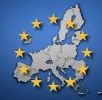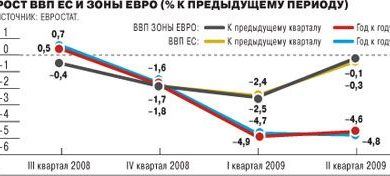Russian Iceland or Icelandic Miracle
The decision of the Russian leadership to help Iceland and allocate a four-billion loan to a country in financial distress will go down in history as one of the most curious events of the current disaster in Russia. The miracle is that if it were not for the crisis, we would never know about it and would not even think about it.
Russian investors are trying to save their assets, hanging in the bankrupt banks of Iceland. The New Times studied which of the Russians and why fell in love with the distant northern island. Alisher Usmanov is withdrawing his holdings from Icelandic banks. Journalists unsuccessfully try to understand how much money the Russian oligarchs actually have in the banking system of Iceland.
Jon works at TaxFree Refund at Iceland’s main airport, Keflavik. Here, 15% of the cost of all goods purchased in the country is returned to departing tourists. 1 He faced the collapse of the national economy, one might say, face to face. Every day, in front of his window, a long line of passengers arriving late for the flight is built. Refunds are requested in euros or dollars, but they are not available in cash, and not a single passenger agreed to take Icelandic kroner for the last three weeks of the crisis – outside.
Deep down in downtown
But the main drama takes place far from here, but in the heart of Reykjavik, in the so-called Downtown. Here are the central offices of three collapsed Icelandic banks – Kaupthing, Landsbanki and Glitnir. And it is here that the fate of losers is being decided now, whose assets (accounts, shares) were frozen in unfortunate banks. According to some reports, a lot of Russian names appear in the “black” list. So, for example, when problems began at the British branch of Kaupthing Bank (Kaupthing Singer & Friedlander Ltd), there lay 5% of Norilsk Nickel and 0.5% of Sberbank owned by Russian businessman Alisher Usmanov. According to media reports, Usmanov was able, with great discounts, to withdraw his shares from Iceland. According to rumors, Roman Abramovich, Oleg Deripaska and even the state-owned oil company Rosneft were among Russian clients of Icelandic banks. As for the latter, according to the same rumors, as a result of the collapse of the banking system of the island state, she was literally held hostage. Her stake was allegedly frozen among other Kaupthing assets, as It was a guarantee collateral for a loan that the bank had previously issued to the Swiss oil trader Gunvor. The company, recall, is the main exporter of all Russian port oil, its co-owner is Gennady Timchenko, who started his business all in the same St. Petersburg in the early 1990s.
Under the hammer!
Companies whose assets are now frozen in the accounts of bankrupt banks cannot be envied. The only way to return them is to buy them from the bank before they go under the hammer to another buyer. Banks are forced to sell their assets in order to be able to pay off debt obligations. Guided by the Icelandic Bankruptcy Law, the local parliament, together with the financial supervisory authority of Iceland, has introduced interim managerial committees in each of the three banks. Bank assets in connection with bankruptcy will now be sold out. If the assets of Rosneft really lay in the burnt Kaupthing, then anyone can now purchase them. Unless, of course, the owners of Rosneft do it first.
“The sale of assets of bankrupt banks has already begun, they do not remain with the state. Committees of temporary managers specially appointed by the authorities are engaged in this, ”says Inar Johnson, an lawyer who has worked for many years in Iceland’s financial supervisory service and now advises nationalized banks, in an interview with The New Times. “There are no plans to hold open auctions under the hammer, so in principle, any company can apply to the committee of temporary managers of the bank with a proposal to purchase any of its assets.”
You go quietly – further into the forest
According to The New Times, on October 17, Russian investors were already arriving at Kaupthing in Reykjavik. They were interested in debt obligations (bonds) of a bankrupt bank. Why, seemingly, invest in a bankrupt bank in a country with a collapsed economy? “Bonds are an asset that may be in demand even in situations of default or complete bankruptcy of a bank, especially since in such cases they are sold at a great discount,” says Alexander Khandruyev, former deputy chairman of the Central Bank. – As a rule, they are bought for the purpose of some kind of offsets. For example, the bank issued its bonds, and the company has loan obligations to this bank. In this case, the purchase of bonds allows you to write off these obligations. ” “The purchase of Kaupthing debt can be explained by the fact that the investor is interested in any of the assets that hangs on the bank’s balance sheet,” explains Siguron Tor Arnason, former CEO of Landsbanki. “Most likely, they expect to exchange the purchased bonds for the asset itself.” Like many others, Arnason, who lost his job two weeks ago as a result of the bankruptcy of Landsbanki, is confident that such an operation can now be closed without too much difficulty. “Now all three banks are partially nationalized, there will be no half-year reports for shareholders or meetings of shareholders,” the banker says. “So any information on operations with bank assets may remain non-public.”
Which asset at Kaupthing Bank may be of interest to Russian investors — whether the block of shares of a certain Russian company has “hung” or prospects opening up with the possible granting of a loan of € 4 billion to Icelanders by Russia — the question remains open. As The New Times managed to find out, it cannot be ruled out that even before the crisis, Kaupthing could issue a loan to the Swiss oil trader Gunvor against the security of a stake in Rosneft. “Under Icelandic law, a bank can issue a loan not exceeding 25% of the bank’s equity,” says Siguron Tor Arnason. – According to data as of September 29, 2008, Kaupthing’s equity was at the level of $ 4–5 billion, which means that theoretically they could issue a loan of about $ 1 billion. But there is another option: issuing a loan under the so-called CFD.2 scheme. In this case loan size can be much higher. “
Can’t hear, can’t see, can’t tell
The bank itself refused to speak of possibly Rosneft shares hanging on its accounts. “I will not comment on such information, try to understand me,” said Sigurdur Einarsson, head of the Kaupthing board of directors in an interview with The New Times. David Gunnarsson, head of the department for attracting investments, also declined to comment on anything, citing company policy. Their colleague Armann Thorvaldsson, CEO of British Kaupthing Singer & Friedlander Ltd, was more open. “We really have several Russian clients, but I don’t remember that we ever dealt with shares of Rosneft. At least I don’t know about it, ”says the banker. “But I can only tell you this about Kaupthing in the UK.” Theoretically, the bank’s divisions in Luxembourg, Switzerland or Iceland could have carried out such an operation. ”
The reaction of the director of the financial management department of the Ministry of Finance of Iceland, Steinar Tor Sveinsson (he was part of the Icelandic delegation who came to Russia to negotiate a possible € 4 billion loan to Reykjavik from Moscow) turned out to be very strange. When asked by The New Times correspondent about the possible relationship between Russian credit and the interests of a number of Russian companies in bankrupt banks, the official abruptly changed his tone and quickly replied: “Read our latest press release. Sorry, goodbye. ”3 At the same time, The New Times sources in Icelandic Kaupthing confirmed that Russian investors interested in buying his debt bonds had already applied to the bank. “Their names are not disclosed,” the source added. “If the transaction takes place, then in this case the need to issue a loan to the Icelandic government disappears. Why invest a lot of money into the whole economy when you can solve your problems directly with the bank? ” Says financial analyst Kaupthing, who commented on the basis of anonymity.
From Russia with love
Apparently, nothing can cool the Russian love of the land of geysers – not even the global financial crisis. Indeed, this is a real tax haven, and even with clean reporting by all international standards (not the Cayman Islands anymore). While financiers in Reykjavik are trying to solve the problems of a failed state, wealthy Russians continue to equip their own, “Russian,” Iceland.
“There are more and more Russian tourists every year. Fashion Hotel 101, a private jet landing at an airfield in the center of Reykjavik, a private jet or helicopter trip to Greenland, fishing is a regular program, ”says Elena Trifon, director of Reykjavik Travel Company TrueIceland. The hotel’s 101 bar, where The New Times correspondent met with Mrs. Trifon, can hardly be distinguished from any expensive deluxe establishment in Moscow. But there are some delights: this is where all the Hollywood stars who ever flew to Reykjavik (the last was John Travolta) stayed here. Among the regular customers of the hotel is Roman Abramovich, the names of other rich “Russo tourists” are not disclosed, but, according to rumors, Oleg Deripaska also stayed here. Mikhail Fradkov with his wife and Anatoly Chubais, who arrived here in 2006 and 2007, respectively, preferred the more conservative Hilton. For those guests whose names should be kept in the strictest confidence, there is another option – the Ranga Hotel in the south of Iceland. “As a rule, a hotel is completely rented. By the way, Rockefeller loves to stay in it with his entire huge family, ”says Elena Trifon. “In January, the Russians plan to rent the hotel, whose names, of course, are not disclosed.”
Forward to the Arctic
Typically, the rest of the richest Russian guests are engaged in the company Luxury Adventures Iceland. “The Russian direction for us is now the most profitable, we have opened a special representative office in Moscow. Russian clients are characterized by excessive demands for everything to be done at the highest level and strictly confidential. It is almost always a private jet, an individual program, private apartments and no mention of names, ”said the company manager, who asked not to be named. So, for example, on October 23, at a place in Akureyri in the very north of Iceland, near the Joya Fjord, a private plane landed with Russian fishermen on board. “They arrived to fish for two days, a common thing,” local newspaper reporters explained to The New Times. Is it a coincidence, but it is here that Roman Abramovich begins the construction of a large villa. Under it, the businessman has already bought four plots of land. Construction is still being delayed due to local regulations that do not allow the construction of too large houses. But as the representative of the local administration, Arnie Bjarnason, has already managed to tell Icelandic journalists, “the rules can be revised in the near future.” “Our colleagues from Akureyri learned that Abramovich’s people bought a large Canadian-style house there for about € 500,000,” says Jon Bjärki, journalist for the Icelandic DV. “Presumably, builders will live in it.” Land and home are far from the only acquisitions of the former governor, and now the chairman of the Chukotka Legislative Assembly. This summer Abramovich bought a large fishing boat, which the Icelandic firm Slippur has already converted into a luxury ship of the deluxe class. Now, through the northern Icelandic fjord, Abramovich can go sailing in the Arctic seas – the ship is equipped with all the equipment for passing through glaciers. As the Icelandic press reported, a large Russian party was scheduled for September to mark the presentation of Abramovich’s new “yacht”. According to Elena Trifon, rumors persisted that even Vladimir Putin would fly. At least, judging by the strictest secrecy, everything was prepared, they were waiting for the Russian guest of the highest level. But in connection with the financial crisis, the party, of course, was canceled. However, judging by how rich Russians settle in Iceland, the holiday continues.
1 According to world practice, the amount of value added tax (VAT) is returned.
2 Contract for difference. The essence of this scheme is that the bank grants loans secured by shares and earns on foreign exchange differences.
3 In a press release, it was not agreed to issue a Russian loan to Iceland, but negotiations are ongoing.
The decision of the Russian leadership to help Iceland and allocate a four-billion loan to a country in financial distress will go down in history as one of the most curious events of the current economic crisis. And one of the most piquant: Russia and Iceland can not be compared either in terms of living standards or in the level of economic development, but nevertheless, in difficult times Iceland does not help Russia out, but Russia Iceland! Who would have thought? And why?
There is no answer to this question. Both Russian Prime Minister Vladimir Putin and Finance Minister Alexei Kudrin (namely, they made the decision to help) tried to get off with common phrases. Kudrin simply said that Iceland is famous for its strict budget discipline, so that it will give everything back. The prime minister of Iceland, Geir Horde, explained the situation even more simply: in an interview with Russian Newsweek, he noticed that Iceland’s traditional friends did not want to help and had to turn to new ones.
But the Russians are no new friends of the fabulous island. For many years, the European media, trying to get to the bottom of the reasons for the Icelandic economic miracle, directly stated: the impetus for it was not some miraculous recipes, but the money of Russian oligarchs. Six years ago, the Danish newspaper Extrabladet called the former Danish colony a “giant laundry room” for laundering Russian money. Or another example: the New Frontiers magazine in Helsinki devoted almost the entire last issue to the end of the Icelandic miracle. The publication, of course, was being prepared long before the current collapse of leading Icelandic banks and Russia’s decision to allocate money. But his observer writes about the Russian track of Icelandic investments. True, noting: no evidence of Russian involvement has ever been provided. And the Minister of Finance of Iceland, Arnie Matiesen, was not heartbreaking when he spoke about the lack of information about the facts that allow accusing Icelandic entrepreneurs of money laundering or illegal operations related to the Russian Federation.
Only now, no special evidence is needed. Alisher Usmanov, one of the important players in the “family” of the first president of Russia, Boris Yeltsin and Gazprom, the owner of the Kommersant holding, is withdrawing from Icelandic banks. Information appears in the media that the president of Iceland, Olafur Ragnar Grimsson, was advised by his good friend Roman Abramovich to turn to Vladimir Putin. They also recalled that the former owners of the nationalized Landsbank, the father and son of Bjorgolfsson, made an important part of their fortune in St. Petersburg in the 1990s. If anyone does not remember: then he was responsible for the international relations of the second Russian capital … yes, Vladimir Putin. And it is no coincidence that the Icelandic press considers the Russian Prime Minister to be a good friend of the Honorary Consul of Iceland in St. Petersburg, Thor Bjorgolfsson.
Journalists – both in Russia, and in Europe, and in Iceland itself – unsuccessfully try to understand how much money the Russian oligarchs actually have in nationalized banks and generally in the banking system of Iceland. And they come to the assumption: it’s much more than the $ 4 billion proposed by Moscow. If you agree with this assumption, then everything falls into place. After all, Vladimir Putin (as, incidentally, Dmitry Medvedev) is a major politician only in TV reality. Outside of the television, both Putin and Medvedev are simply officials whose main task is to save the funds of those who invented them and made them the arbiters of Russia’s destinies, mainly oligarchs of the Yeltsin draft. So the decision to help Iceland is not connected with worries about the economy of this wonderful island, nor with the desire to impress the West, nor with attempts to intervene in the eternal conflict between Great Britain and Iceland, aggravated by the possible loss of funds by British investors of Icelandic banks. No, in Moscow they save themselves.
The miracle is that if it were not for the crisis, we would never know about it and would not even think about it. Well, who really would have thought of somehow linking Roman Abramovich and the president of Iceland? Or imagine that the Icelandic economy is associated with Russian “investments”? Never in my life!
So the crisis is not only a disaster, but also a benefit. The time will come – and much earlier than it seems to us – we will know for sure what the role of Russian business is in Ukrainian economic and political processes. We will understand who was a friend to someone, someone – whose sponsor and benefactor. We’ll find out what actually caused the price of gas, which Ukraine paid all the years during the reign of Leonid Kuchma. And what actually caused the famous agreements that made Ros-UkrEnergo the main and only seller of blue fuel to Ukraine. And if now Ukraine will also receive some kind of “special” price, we will also find out why. And we will understand that the Russians are not philanthropists who seek to save the Ukrainian economy and prevent it from collapsing into the abyss, and that all these years of their interest in what was happening was much more than ours. But this will not be an Icelandic one, but a Ukrainian miracle.
This post is also available in:
 English
English  Русский (Russian)
Русский (Russian)





